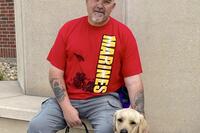The U.S. Army's acquisitions chief said recently that the military needs to make a major technological breakthrough in speed if combat forces are to maintain their edge on future battlefields.
"What is it that we could do that would be the same as 'own the night?' " said Bruce Jette, assistant secretary of the Army for acquisitions, logistics and technology, referring to the service's breakthrough in night-vision technology. "And I'll tell you, the thing that keeps coming is speed."
Speaking at the National Defense Industrial Association's Science & Technology Symposium and Showcase, he recalled an experience he had in the early 1980s as a tank commander during a force-on-force training exercise at Fort Carson, Colorado.
"I was coming up over this ridgeline, and the other guy is coming up over the other ridgeline. I saw him, he saw me," Jette said.
Each tank started rotating its turret toward the other.
"It was like quick draw: Who is going to get in line with the other guy first?" Jette said, describing how it all came down to "the rate at which the turret turned."
The Russians are experimenting with robotic turrets that use algorithms to speed up decision-making in combat, he said. Images appear on a flat screen inside the tank, and "the computer goes, 'I think that is a tank.'
"They have [pictures] of our tanks and vehicles in their computer, and the computer looks at them and puts little boxes around them and, depending on how far away they are and depending on what orientation they are in, the computer has an algorithm that says, 'Shoot that one first, that one second and that one third,' " Jette said.
This reduces the number of steps the gunner must go through before engaging targets.
"I need your ideas on how to put ourselves way past what these guys are onto," Jette said, addressing an audience of industry representatives. "How can we be faster? How can we be better?"
He added, "One of the reasons we are not doing that yet is we are not going to mistake an ice cream truck for a tank. Our probability of target detection and identification has to be extremely high. Our thresholds would have to be higher; we would have to be better, we would have to be faster. Speed is going to be critically important."
-- Matthew Cox can be reached at matthew.cox@military.com.










